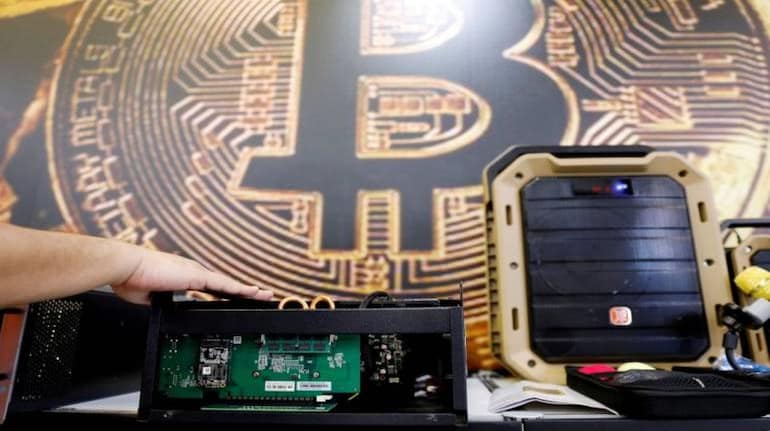



On March 9, US President Joe Biden signed an executive order directing various government agencies to address the risks and harness the potential benefits of digital assets, including cryptocurrencies, and to also analyse the risks and benefits of establishing a central bank digital currency i.e. digital version of their dollar.
The six major themes addressed by the initiatives are consumer protection, financial stability, illicit finance, the US economy's competitive advantage, financial inclusion and responsible innovation.
The US Treasury, Federal Reserve, Securities and Exchange Commission, Consumer Financial Protection Bureau, and banking regulators were also asked to produce reports on the broad implications of digital assets, as well as how these would affect consumers, investors, businesses, and economic growth. This Executive Order (EO) aims to encourage responsible digital asset innovation.
Understand that digital currency is not the same as cryptocurrency
Many people believe that a digital currency, such as CBDC, that governments around the world are discussing is the same as a cryptocurrency.
That is not true. The digital currency only has features that are similar to actual currency, so India's digital currency refers to a digital rupee, and the same is true for the dollar, which can be available in digital format. It can be used to purchase goods and services.
Your cryptocurrencies or crypto assets do not have legal tender status. It means they can't be used to buy or sell things. It's comparable to purchasing gold or other investment products.
Can we call this EO a game changer for digital assets?
Well, this is a well-balanced EO, taking into account the technology, which holds great promise for the future, because digital assets are slightly complex, with their own risks and challenges that must be addressed. Regulators throughout the world are nonetheless concerned about the nascent digital asset sector.
As a result, this Executive Order (E.O) is an indication that the United States recognises that digital assets are one of the most important technological advancements of the twenty-first century.
What do you do as a crypto investor?
This E.O. should serve as a springboard for crypto investors to learn more about this new-age technology in the form of digital assets, which is becoming a topic of debate in every household. So, for both new and experienced investors interested in the crypto market, here are some tips:
Investing Advice for First-Time Investors
1. Never underestimate the importance of asset allocation
The importance of asset allocation and diversification cannot be understated. One thing you should never forget is asset allocation; as easy as it may seem, it is the only way to build wealth; you cannot invest in crypto until you understand the technology behind it, the underlying risk, and the various problems that a particular project is addressing on the blockchain. You don't want to put your money into a meme coin.
2. Love or hate crypto, but don't ignore it
As I've said before, don't ignore it. You may choose to hate it, but my opinion is that you should embrace any technological development rather than ignoring it at all. Remember that the stock market was once treated as a gamble and is now a mainstream investment avenue. This does not mean you should invest in crypto, but it does mean you should be aware of what's going on.
3. The 5 percent rule should be followed
What I mean by 5 percent is that you should only invest what you can afford to lose, because crypto is still a new animal in the jungle, and you should proceed with caution owing to its high risk potential and volatility. So, unless you know your risk profile and are well-versed in this field, don't invest more than 2 to 5 percent. There's a chance that some coins could drop by as much as 60-70 percent overnight, and keep in mind that even a blue-chip coin like Bitcoin is down more than 25 percent from its prior highs.
4. Get a first-mover advantage on finding a multi-bagger cryptocurrency
This asset class is far more volatile, and the odds of finding a multi-bagger will become increasingly skewed as more people invest in it. So you need to be investment-ready because you don't want to be the last one to figure it out if it becomes regularised and mainstream, Because the best moment to learn isn't when it's permitted, but when it's uncommon.
5. Use a reliable crypto exchange
The crypto field in India is still unregulated, and new exchanges are popping up regularly. So instead of regulated agencies like the NSEs or BSEs, you have crypto exchanges built by young innovators, which is why it is critical to invest through a well-established platform since exchange risk is high, and losing all of your crypto is a major risk in the crypto field. You might want to look into international platforms as well and weigh the benefits and drawbacks.
6. Stay away from social media and unsolicited advice
There is a terrible shortage of trustworthy data and demonstrated competence in the crypto field; everyone, including myself, is learning on the job, making it tough to distinguish between a genuine advisor and a scammer. And keep in mind one basic fact: no one can make you incredibly rich by selling a tip on WhatsApp or through SMS for a few dollars; this is primarily a hoax.
7. Create your own crypto index
The crypto market has blue-chip, mid-cap, small-cap, and penny coins, just like the stock market. To begin, limit your investments to blue-chip coins like Bitcoin or Ethereum.
Discover the latest Business News, Sensex, and Nifty updates. Obtain Personal Finance insights, tax queries, and expert opinions on Moneycontrol or download the Moneycontrol App to stay updated!
Find the best of Al News in one place, specially curated for you every weekend.
Stay on top of the latest tech trends and biggest startup news.